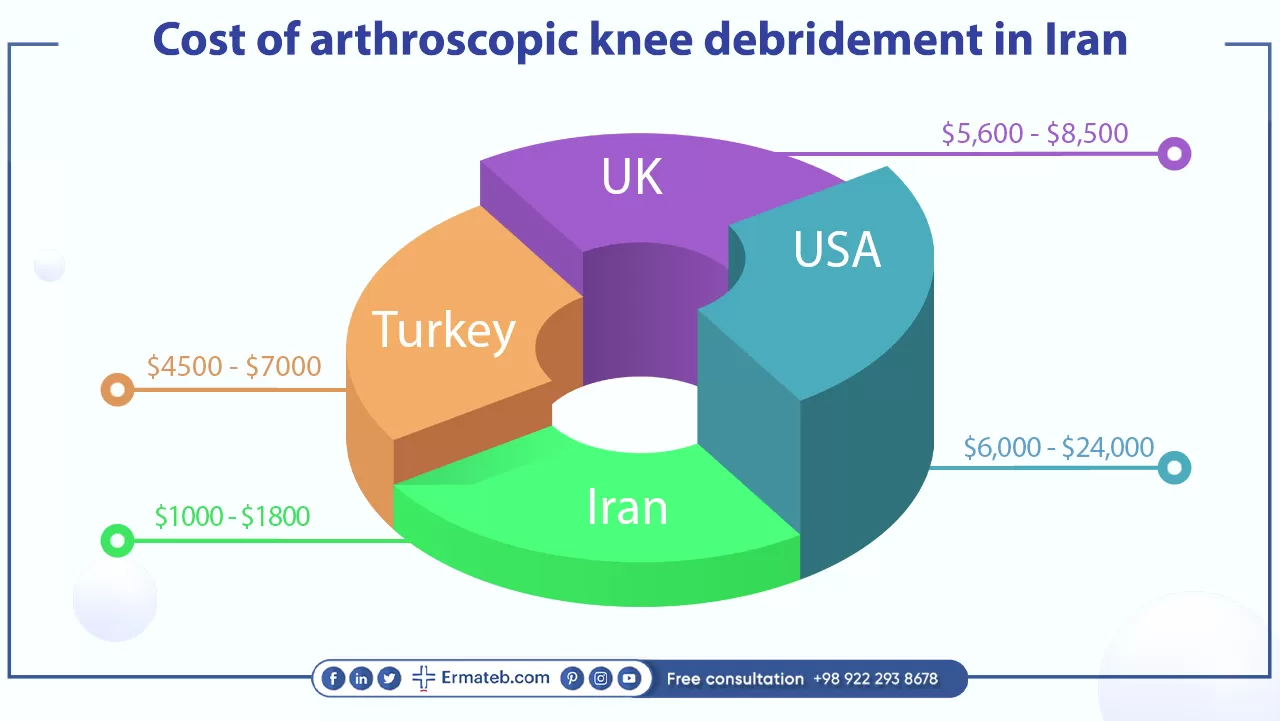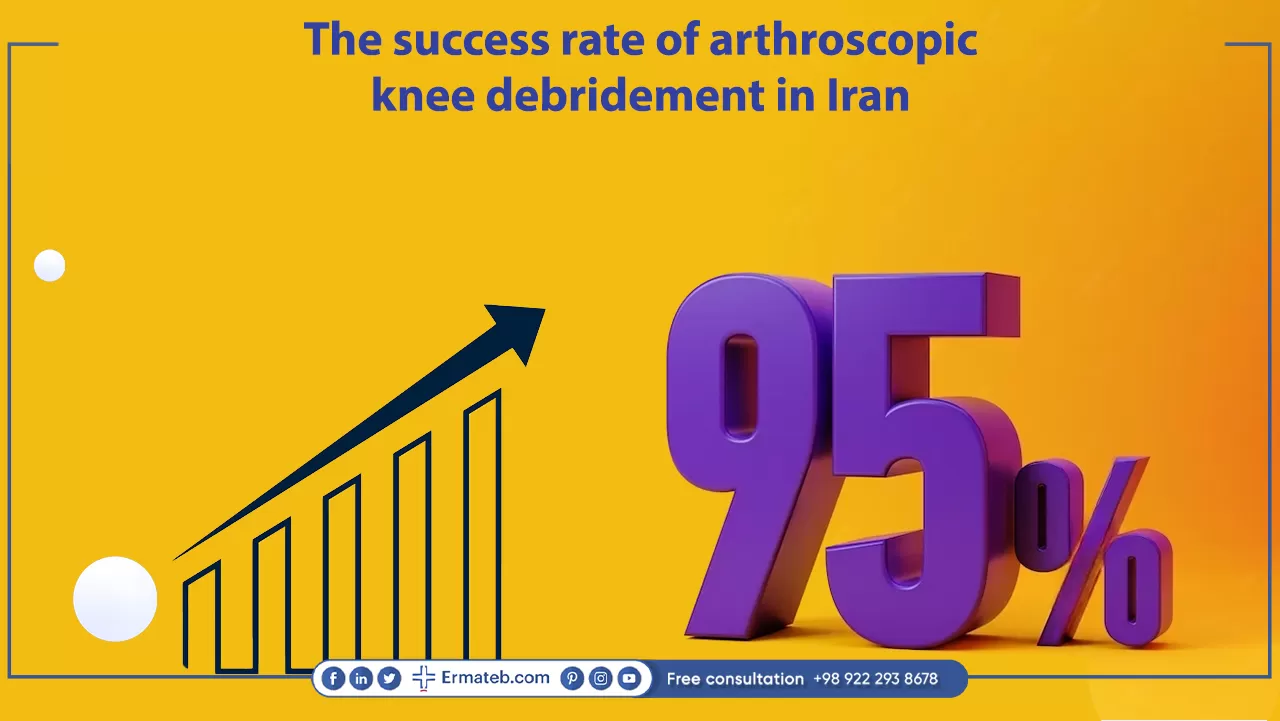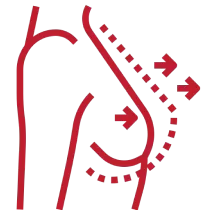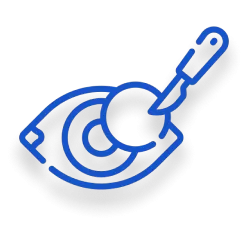Arthroscopic knee debridement is an orthopedic Surgery that is used to eliminate loose or damaged tissue from the knee joint. Patients can get arthroscopic knee debridement in Iran to enjoy the best procedure.
It is performed through small incisions in the skin, using an arthroscope (a thin instrument with a camera and a light), and special surgical tools. The surgeon can see inside the knee by using the arthroscope and performing the debridement without making a large cut.
Arthroscopic knee debridement may be performed for many reasons, including:
1.Treating osteoarthritis of the knee: it’s a condition where the cartilage that covers the ends of the bones in the joint wears away, and causes swelling, pain, and stiffness.
2.Eliminating loose bodies or fragments of cartilage or bone that may cause inflammation, pain, or locking of the knee.
3.Smoothing rough or irregular surfaces of the bone or cartilage which may interfere with the movement of the joint.
4.Repairing torn or damaged tendons, ligaments, or menisci (cushions of cartilage between the bones) which may affect the function and stability of the knee.
In addition, there are various knee problems and injuries treated by arthroscopic knee debridement surgical procedures. arthroscopic knee debridement surgical procedure can treat the following conditions:
1.A swollen synovium.
2.Popliteal cyst.
3.Regular knee pain.
4.Meniscus erosion.
5.Knee joint relaxation.
Cost of arthroscopic knee debridement in Iran

The cost of a procedure is one of the most important parts of any surgery. Some people may not be able to have their surgery in their hometown due to the low prices of treatments. Therefore, they decide to get their treatments overseas at a lower cost.
Iran offers its medical services at much lower prices compared to other countries and the quality is much more important than price. The cost of arthroscopic knee debridement in Iran is between $1,000 and $1,800, while the same arthroscopic knee debridement cost in the United States is around $6,400, and the arthroscopy knee debridement price in India is about $4,400.
The low currency of this country against other countries, and the high number of patients who travel to Iran to get this surgery are two main reasons for the low price of this operation. Therefore, the low price is not because of the low quality of this treatment, and patients can have their surgery at high quality and save a lot of money at the same time. To get more information about this surgery and having it in Iran, contact Ermateb now.
Types of arthroscopic knee debridement

Various types of arthroscopic knee debridement can be used to eliminate loose or damaged tissue from the knee joint. Some of them are:
1.Joint lavage:
The joint lavage technique involves injecting salt water (saline) into the joint to expand it and wash away any blood or debris. This helps decrease pain and inflammation in the joint.
2.Removal of loose bodies or fragments:
This procedure involves using special tools to eliminate any loose bodies or fragments of bone or cartilage that may cause swelling, pain, or locking of the knee. This helps improve the function and movement of the joint.
3.Smoothing of rough or irregular surfaces:
This procedure involves using special tools to smooth rough or irregular surfaces of the bone or cartilage that may interfere with the movement of the joint. This can help decrease wear and tear and friction in the joint.
4.Repair of torn or damaged tendons, ligaments, or menisci:
This procedure involves using special tools to repair any damaged or torn tendons, ligaments, or menisci that can affect the function and stability of the knee. This helps restore the strength and support of the joint.
The extent and type of arthroscopic knee debridement procedure depends on the person’s condition and needs. The surgeon will decide which procedure is best for each case after examining the joint and identifying the areas of inflammation or damage.
Who can be a candidate for arthroscopic knee debridement in Iran?
Individuals who suffer from knee pain or whose knee function is limited are the ideal candidates for arthroscopic knee debridement. One should consult with an orthopedic surgeon to be assessed for candidacy for this procedure.
chondromalacia, ligament injuries or tears, unstable knee, meniscus tear, and inflamed synovial membrane are the knee conditions that can warrant arthroscopic knee debridement.
Preparation for arthroscopic knee debridement in Iran
Before the knee arthroscopy, you will meet the surgeon to discuss the operation. The surgeon will explain how you can prepare for the operation in advance.
You should stop smoking before your procedure. Smoking causes you to get an infection following the operation, which can slow down the recovery process. It can also make your procedure less work and lead to complications. Knee arthroscopy is usually performed under general anesthesia, but you may have it under local anesthesia. A local anesthesia numbs the knee and you will stay awake during the procedure. If you have a general anesthetic, you will be asleep during the surgery. A general anesthetic can make you sick, so it is important not to eat or drink for a specific time before the arthroscopy.
You may be asked to wear a compression stocking on the other leg. It’ll help to prevent blood clots from forming in the veins in the leg, which causes deep vein thrombosis. You may also require to have an injection of an anti-clotting medicine. You may need to stop taking certain medications before the procedure. It may even include common OTC medications, like ibuprofen (Advil).
You will be able to go home from the hospital on the same day of the surgery. But if you have had a regional anesthetic, you need to stay overnight. You will be able to leave the hospital when you can walk well enough again. The surgeon will discuss with you what will happen before, during, and following the operation.
There are also some other tips to be before the operation:
1.Inform your doctor if you’re on some kind of medication.
2.Inform your doctor if you are taking any blood thinners.
3.There are certain tests to be done in the hospital like allergy or blood tests, urine tests, chest X-rays, or electrocardiograms, as ordered by the doctor.
4.Physical knee exams and MRI images are also made.
5.Quit alcohol before the operation.
6.follow the instructions given by the doctor and the orthopedic surgeon.
7.Arrange for someone to drive you home following the operation and stay with you for the first day.
8.Bring comfortable and loose clothing that fits over a brace and a bandage.
How is arthroscopic knee debridement performed?
The surgeon begins by anesthetizing you with one of the regional anesthesia, local anesthesia, or general anesthesia. The surgeon makes two or three small incisions around the knee and inserts the arthroscope and the utilized equipment. After that, the surgeon examines the knee through the arthroscope to see if there is a hidden injury.
The surgeon starts the surgery after diagnosing the condition by the scope. The surgeon eliminates the damaged portion of the cartilage and sutures it. A sterilized liquid is used to fill your joint to ease the operation and enhance vision during the diagnosis.
The surgery may take about 1 hour, depending on the extent of the injury and the type of debridement. After the surgery, you may need to stay in the hospital for one days and receive pain medication and antibiotics. You may also need physical therapy to range of motion in your knee and recover your strength.
The surgeon uses special tools to eliminate any loose bodies or fragments of bone or cartilage that may cause swelling, pain, or locking of the knee. In addition, the surgeon may also smooth rough or irregular surfaces of the bone or cartilage that can interfere with the movement of the joint. The surgeon may also repair any damaged or torn tendons, ligaments, or menisci (cushions of cartilage between the bones) that can affect the function and stability of the knee.
Arthroscopic debridement can enhance the quality of life for some individuals with osteoarthritis or other knee problems, but it also has some risks and side effects. This procedure is not a cure for osteoarthritis or any other degenerative conditions of the knee. It can only provide temporary relief of symptoms, and it may not prevent further deterioration of the joint.
Advantages and disadvantages of arthroscopic knee debridement
Like any other procedure, arthroscopic knee debridement has some pros and cons that patients should take into consideration. Some of these advantages and disadvantages are:
Advantages:
1.This is a minimally invasive surgery that needs only small incisions in the skin, which decreases the risk of bleeding, infection, scarring, and swelling, compared to open surgery.
2.Arthroscopic knee debridement can be performed as an outpatient procedure, which means the patient can go home the same day of the procedure and avoid a long hospital stay.
3.This procedure can improve the mobility and quality of the patient’s life by relieving pain, stiffness, inflammation, and locking of the knee caused by damaged or loose tissue.
4.Arthroscopic knee debridement can repair other problems in the knee joint, like torn meniscus, ligaments, or tendons that can affect the function and stability of the knee.
Disadvantages:
1.Arthroscopic knee debridement is not a cure for degenerative conditions of the knee.
2.This procedure may not work for everyone. Some individuals may not experience any improvement or may worsen after the operation. The outcomes may depend on factors like weight, age, activity level, and severity of the damage.
3.Arthroscopic knee debridement has some complications, like bleeding, nerve damage, infection, swelling, blood clots, or allergic reactions to anesthesia or medication. These are rare but serious complications and may need further treatment or operation.
Arthroscopic knee debridement risks and complications
procedures are always accompanied by some risks and complications, including:
1.Scars
2.Fat embolism
3.Muscle and ligament damage
4.Respiratory problems due to anesthesia
5.Allergic reactions to some types of medications or anesthesia
6.Severe bleeding during the procedure:
during the surgery, there is a possibility of bleeding inside or outside the knee. It can cause swelling, bruising, or hematoma. The patient may need drainage or medication to stop the bleeding.
7.Nerve damage:
Risk of damaging the nerves that run near the knee during the procedure. This causes numbness, weakness, tingling, or loss of sensation in the leg or foot. Most nerve damages are temporary and resolve on their own, but some of them may be permanent and need further treatment.
8.Infections:
There is a small risk of getting an infection in the skin or the joint following the procedure. This causes pain, redness, swelling, fever, or pus. The patient may need antibiotics or another procedure to treat the infection.
9.Swelling:
this is normal to have some swelling in the knee following the operation, but it should go down gradually with ice, elevation, and compression. However, if the swelling is intense or doesn’t improve, it may indicate bleeding, infection, or fluid accumulation in the joint. The patient may need medication or aspiration to decrease the swelling.
10.Blood clots:
There is a risk of developing blood clots in the veins of the legs and lungs following the operation. This causes redness, pain, swelling, warmth, or difficulty breathing. Blood clots may be life-threatening and need immediate medical attention. The patient may need blood thinners or an operation to prevent or treat blood clots.
The occurrence of these complications can be decreased by choosing a professional and experienced surgeon.
Arthroscopic knee debridement recovery period
The arthroscopic knee debridement procedure is quite simple but can vary depending on the extent of the procedure and the individual. It needs a shorter period and smaller incisions than other traditional procedures. It means that the patient can go home following the surgery. However, there are many instructions that the patient need to follow:
1.Keep the wound dry, clean, and sanitized.
2.The patient can ask the doctor about when he/she can shower and when to change the bandage.
3.Apply no extra weight or pressure on your knee.
4.Use mobility aids.
5.The patient should do simple knee exercises to restore the range of motion and strength in the knee.
6.Avoid drinking alcohol and smoking as they can impair healing
Some factors that may affect your recovery time are:
1.Age, activity level, weight, and severity of the damage.
2.The type of anesthesia (local or general)
3.The amount and type of tissue repaired or removed.
4.The presence of any side effects, like blood clots, infection, bleeding, swelling, or nerve damage.
5.The adherence to your surgeon’s instructions and physical therapy program.
The doctor prescribes pain medications to decrease the pain during the recovery following arthroscopic knee debridement. Patients need physical therapy following arthroscopic knee debridement procedure to help the knee retain its function. Generally, patients can expect to return to the full extent of their usual activities within 6 to 8 weeks following the operation, but procedures such as repairs of a meniscus, ACL, or PCL usually need some months for complete rehabilitation.
The success rate of arthroscopic knee debridement in Iran

The success rate of arthroscopic knee debridement is different depending on the size, type, and location of the tear, and the patient’s activity level, age, and related damages. However, the success rate of arthroscopic knee debridement is 95% or over 90% for most people. This surgery is a minimally invasive technique that removes injured cartilage or bone from the knee joint by the use of small incisions and specialized tools. Arthroscopic knee debridement is not recommended for people with osteoarthritis, since it has been shown to have no significant advantage over placebo procedure.
Why choose arthroscopic knee debridement over surgery?
Arthroscopic knee debridement has some benefits over other kinds of surgeries, including:
1.It is minimally invasive, meaning it needs only small incisions and causes less injury to the surrounding tissues.
2.It involves a lower risk of side effects, like bleeding, infection, or nerve damage.
3.It has a short recovery time, in which the patient can return to normal activities sooner.
4.It can decrease pain and improve stability and mobility in the knee.
5.It diagnoses and treats various knee issues, like a torn meniscus or a misaligned kneecap.
However, arthroscopic knee debridement may not be appropriate for everyone. it may not be effective for people with intense osteoarthritis, since it doesn’t address the underlying cause of the joint degeneration. It may also not achieve the desired outcomes for some people, depending on the type, age, and location of the tear, as well as related injuries. Therefore, the patient should consult with the doctor about the benefits and complications of arthroscopic knee debridement and other surgical options for their specific condition.


 Arabic
Arabic
 German
German
 Persian (Farsi)
Persian (Farsi)
 Russian
Russian
 Beauty
Beauty






 Medical
Medical




 Hotels
Hotels
 Hospitals
Hospitals































![Frequently asked question about [name]](/v2tem/images/pages/service/faq-image.webp)
